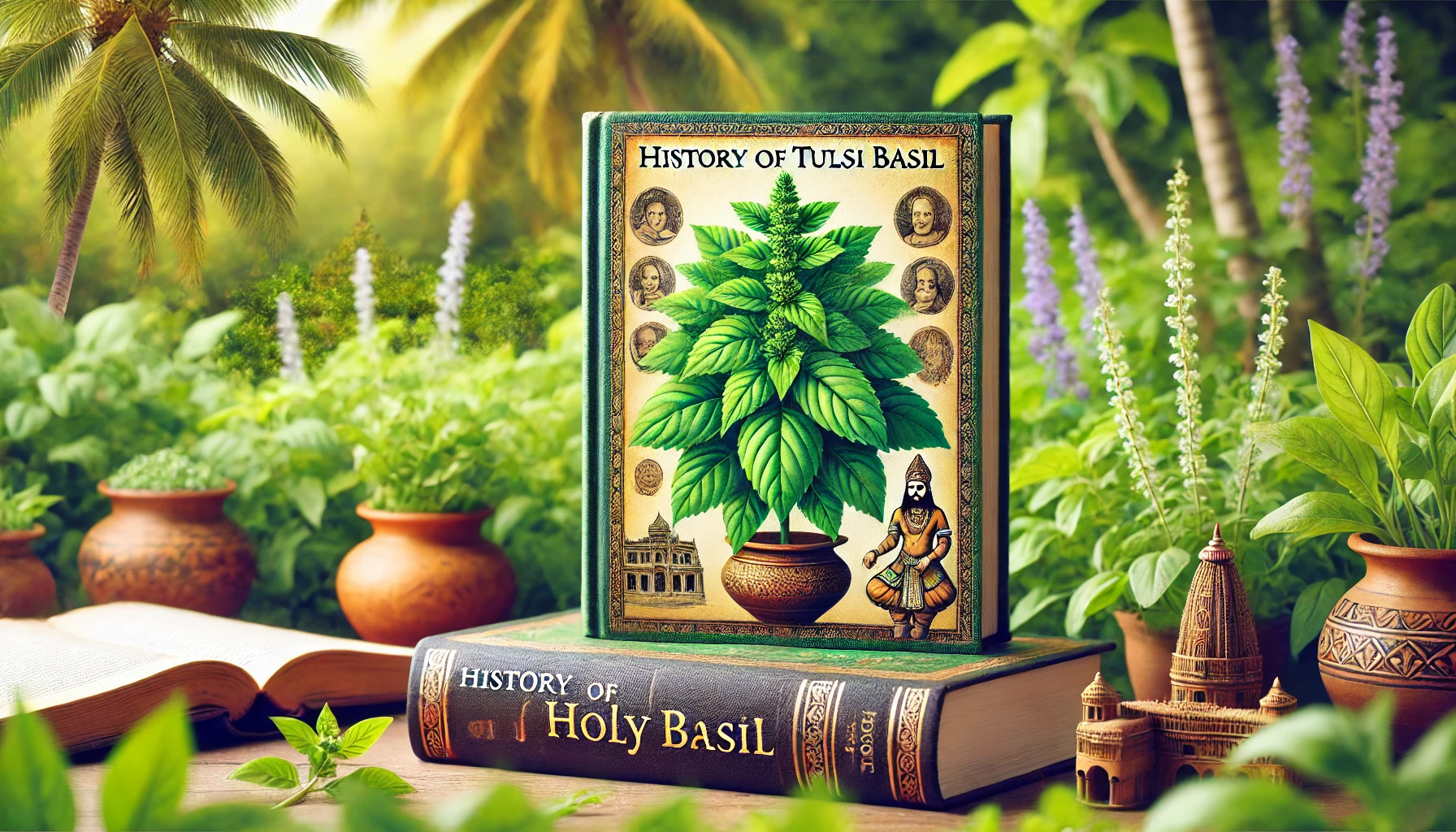The Sacred Herb: A Comprehensive History of Tulsi (Holy Basil)
Introduction:
Tulsi, also known as Holy Basil, is more than just an herb. It holds a profound significance in various cultures around the world, particularly in India, where it is revered as a sacred plant. Its history is deeply intertwined with spirituality, medicine, and cultural practices, spanning thousands of years. In this comprehensive article, we delve into the rich history of Tulsi, exploring its origins, cultural significance, medicinal properties, and modern-day relevance.
Origins and Botanical Background:
Tulsi (Ocimum tenuiflorum or Ocimum sanctum) is a member of the Lamiaceae (mint) family and is native to the Indian subcontinent. It is an aromatic perennial plant with green or purple leaves and small purple flowers. The name “Tulsi” is derived from the Sanskrit word “Tulasi,” which means “the incomparable one” or “matchless.”
In Hindu mythology, Tulsi is believed to have originated from the body of the devoted wife of Lord Vishnu, known as Tulsi Devi or Vrinda. According to the legend, Vrinda was cursed and transformed into a plant by Lord Vishnu himself, who then promised to marry her in the form of the Shaligram stone. This mythological tale highlights the sacredness and divine connection attributed to Tulsi in Hindu culture.
Cultural Significance:
Tulsi holds immense cultural and religious significance in Hinduism, where it is regarded as a symbol of purity, devotion, and longevity. It is considered the most sacred plant and is often grown in homes and temples across India. Tulsi is also associated with several Hindu deities, particularly Lord Vishnu and his avatars, making it an integral part of daily rituals and festivals.
In many Hindu households, a Tulsi plant is grown in a Tulsi Vrindavan or Tulsi courtyard, which is a small, raised platform or structure adorned with clay pots or bricks. Devotees offer prayers, water, and lighting of lamps to Tulsi as a gesture of reverence and devotion. The leaves of Tulsi are considered sacred and are used in various religious ceremonies, including weddings, funerals, and other auspicious occasions.
Medicinal Properties and Ayurvedic Uses:
Aside from its religious significance, Tulsi is highly valued for its medicinal properties in Ayurveda, the ancient Indian system of medicine. It is often referred to as the “Queen of Herbs” due to its numerous health benefits. Tulsi contains a rich array of bioactive compounds, including flavonoids, phenols, and essential oils, which contribute to its therapeutic effects.
In Ayurveda, Tulsi is classified as a rasayana, or rejuvenating herb, and is believed to promote longevity and vitality. It is traditionally used to treat a wide range of ailments, including respiratory disorders, digestive issues, stress, inflammation, and infections. Tulsi is consumed in various forms, including as a tea, juice, extract, or powder, to reap its medicinal benefits.
Modern-Day Relevance and Scientific Research:
In recent years, Tulsi has garnered significant attention from researchers worldwide due to its pharmacological properties and potential therapeutic applications. Numerous studies have investigated the antioxidant, anti-inflammatory, antimicrobial, and immunomodulatory effects of Tulsi and its various bioactive compounds.
Research suggests that Tulsi may offer potential benefits for managing conditions such as diabetes, hypertension, arthritis, cancer, and neurodegenerative diseases. Additionally, Tulsi extracts and essential oils have shown promising results in combating microbial infections and enhancing immune function.
Furthermore, Tulsi is increasingly finding its way into mainstream wellness products, including herbal supplements, skincare formulations, and aromatherapy oils, catering to a growing demand for natural and holistic remedies.
Conclusion:
Tulsi, or Holy Basil, stands as a testament to the enduring legacy of ancient traditions and the profound wisdom of traditional medicine systems like Ayurveda. Its journey from mythological reverence to modern scientific scrutiny underscores its timeless significance and relevance in human culture and health.
As we continue to unravel the mysteries of this sacred herb, one thing remains certain: Tulsi will continue to inspire awe, devotion, and healing for generations to come, serving as a bridge between the spiritual and the scientific realms.



